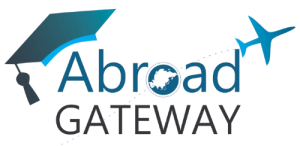For years, Canada has been one of the most preferred destinations for international students—not only because of its world-class education system, but also due to its reputation as a pathway to Canada PR (Permanent Residency). The popular Study → Work → PR route has helped thousands of students build stable careers and settle in Canada.
However, with immigration rules evolving and competition increasing, many students are now asking:
Is the Study + Work Route Still a Strong Pathway to Canada PR in 2025?
Let’s break it down.
Why the Study-Work-Immigrate Route Became So Popular
The study-to-PR pathway became the top choice for international students because it combines education, Canadian work experience, and adaptability — three key factors that the Canadian immigration system values highly.
When you study in Canada:
-
You earn extra points in the Comprehensive Ranking System (CRS).
-
You improve your language proficiency and work skills.
-
You gain Canadian work experience through the Post-Graduation Work Permit (PGWP).
This combination often gives applicants a strong profile for Express Entry or Provincial Nominee Programs (PNPs).
How Canadian Education Boosts Your PR Score
A Canadian degree or diploma not only enhances employability but also adds valuable CRS points.
-
A one-year program can earn you additional CRS points.
-
A two-year or longer program can further strengthen your profile.
-
Combined with Canadian work experience, these points can push your CRS above the cutoff for PR draws.
In short, studying in Canada helps you build a strong foundation for your PR journey — academically, professionally, and strategically.
Post-Graduation Work Permit (PGWP): Your PR Stepping Stone
After completing your studies, you can apply for a PGWP, which allows you to work full-time in Canada for up to three years (depending on your program length).
This period is crucial:
-
You gain Canadian work experience under a valid job offer.
-
You become eligible for programs like the Canadian Experience Class (CEC) within Express Entry.
-
You improve your CRS score through skilled work experience and better language scores.
Provincial Nominee Programs (PNPs): A Major Advantage
Many provinces run PNPs tailored for international graduates. Examples include:
-
Ontario International Graduate Stream
-
BC Provincial Nominee Program (BCPNP)
-
Manitoba International Education Stream
A PNP nomination adds 600 CRS points, virtually guaranteeing an Invitation to Apply (ITA) for PR.
Role of French in Strengthening Your Canada PR Chances
As competition increases in 2025, students are looking for ways to improve their CRS scores and stand out in the Express Entry pool. One of the most effective yet often overlooked strategies is learning French.
Canada is a bilingual country, and the immigration system rewards applicants who can contribute to both English and French-speaking communities. So, even basic to intermediate French proficiency can positively impact your PR prospects.
How Knowing French Helps You Get PR
| Benefit | How It Helps |
|---|---|
| 1. Higher CRS Score | A good score in TEF/TCF French language tests can add up to 50 CRS points. |
| 2. More PR Program Options | You may qualify for special streams like the French-Speaking Skilled Worker Program. |
| 3. Faster PNP Invitations | Provinces such as Ontario, New Brunswick, Manitoba, and Quebec prefer French-speaking applicants. |
| 4. Better Job Opportunities | Being bilingual boosts eligibility in government, education, customer service, tourism, and more. |
Challenges in 2025: What’s Changing
While the study-to-PR pathway remains popular, 2025 brings new challenges:
-
Higher CRS cutoffs due to increasing applicants.
-
More selective PNP draws often target specific job roles.
- Rising cost of education and living
-
Policy changes emphasize work experience and adaptability over academic credentials alone.
Students must now plan carefully — choosing programs and locations aligned with labor market demands.
Is the Study + Work Route Still Viable in 2025?
Yes, it is — but it’s not as easy as before.
Pros:
-
Canadian education and work experience are still highly valued.
-
PGWP and PNP options remain open for graduates.
-
Easier cultural and professional adaptation compared to direct immigration.
Cons:
-
Intense competition among applicants.
-
Rising costs of education and living.
-
Uncertainty in immigration draw patterns.
In short, the route still works — but requires strategic planning and up-to-date guidance.
Alternative Pathways to Canada PR
If you prefer not to study, other options exist:
-
Express Entry (Federal Skilled Worker Program)
-
Provincial Nominee Programs (Direct Entry)
-
Rural and Atlantic Immigration Programs
-
Family Sponsorship
-
Start-Up and Business Immigration
Each has its own eligibility criteria, but none offer the same flexibility and experience as the study-work route.
Tips for Canada PR Success in 2025
-
Choose a recognized DLI (Designated Learning Institution).
-
Enroll in programs aligned with high-demand occupations.
-
Gain co-op or internship experience during studies.
-
Maintain a valid study and work permit status.
-
Keep improving your IELTS or CELPIP scores.
-
Stay updated on IRCC policy changes.
-
Consult a licensed immigration advisor for planning your PR journey.
Final Thoughts
The study + work pathway remains one of the best and most achievable routes to Canada PR in 2025, especially for international students who plan strategically. While the process has become more competitive, it’s still one of the most reliable ways to build a life in Canada — through education, experience, and genuine contribution to the Canadian economy.
Plan Your Canada PR Journey with Abroad Gateway
At Abroad Gateway, we specialize in Study Visas, Tourist Permits, and PR Guidance for Canada. From university admissions to post-study immigration planning, our experts make your journey smooth and stress-free. Contact us today to plan your pathway to Canadian PR success!






